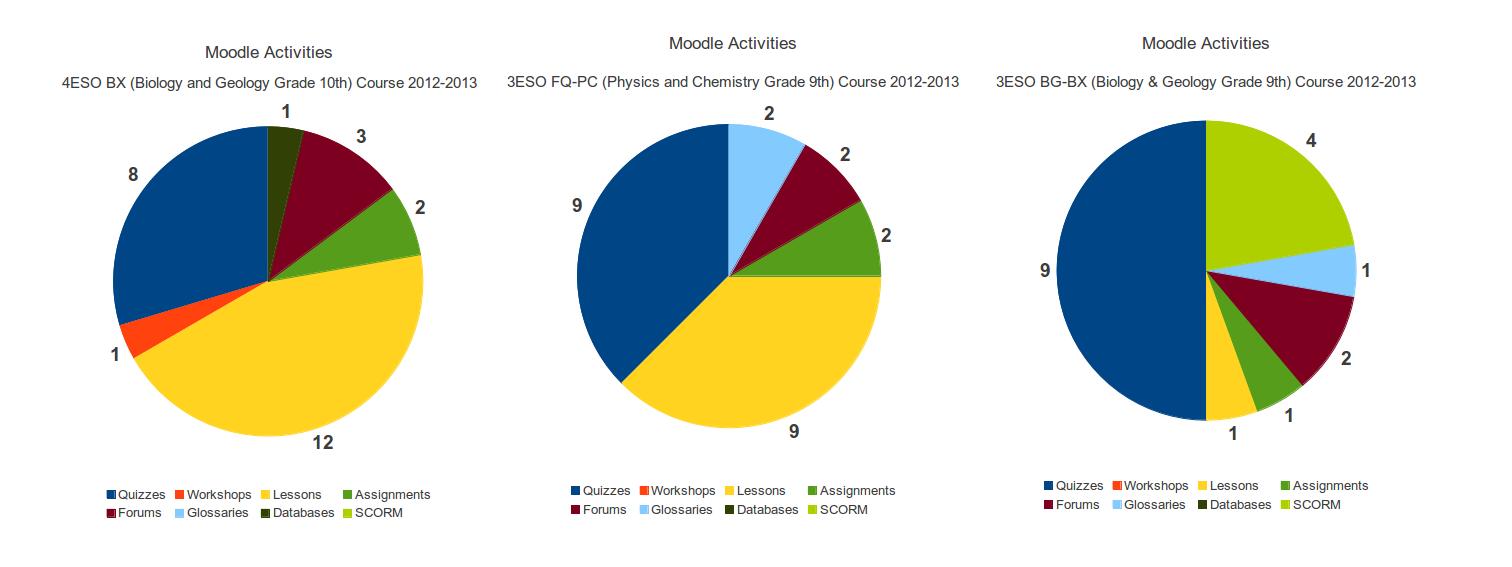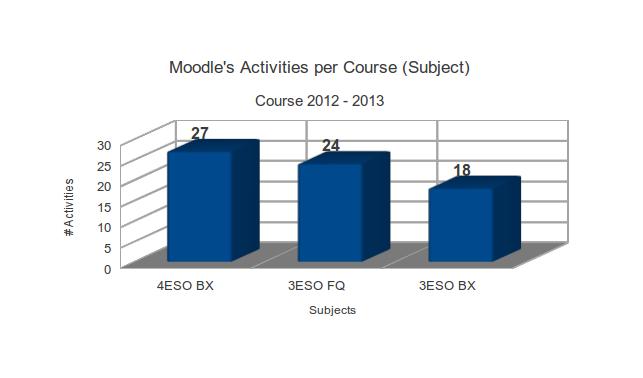Along course 2012-2013 I taught two main subjects: Biology-Geology and Physics-Chemistry. I had four groups from grade 9th (3º ESO) and two groups from grade 10th (4º ESO). The four groups of grade 9th were divided into two biligual groups (English language) and two non-biligual groups (Spanish and Galician languague). The full picture is:
Grade 9th
2 Physics and Chemistry (bilingual groups): English
2 Física y Química (non bilingual groups): Spanish
2 Biology and Geology (bilingual groups): English
2 Bioloxía y Xeoloxía (non-bilingual groups): Galician
Grade 10th
2 groups Bioloxía e Xeoloxía: Galician
As in recent years I’ve used Moodle as much I could to support the teaching-learning process. I could re-use most of the resources and activities I already had from previous years but I also had to create new ones, especially for bilingual groups. As it is the first time I’m going to report about some stats and learning analytics related to my ‘teaching with Moodle’, data can’t be used for comparison yet, but I hope to do it next years so we will be able to take out some conclusions about the use of resources and activities in my way of using Moodle.
Course 2012-2013 was my second year teaching bilingual groups. It’s a challenge for me, after almost 21 years teaching in Spanish and Galician (both are co-official languages in Galicia), to teach in English 14-16 years old students. So, I had to prepare (create, select, adapt,..) a lot of resources and activities for bilingual groups. Now I can say that I already have the same ‘arsenal’ for both (bilingual and non-bilingual) in Moodle so, that’s why I grouped my groups by subject to create the pie chart showed below.
I think it’s better to compare Moodle’s activities than Moodle’s resources. As I often post or tweet, Moodle, IMO, is so powerful thanks to the wide variety and high quality of its activities. Although it’s food for another post, let me say once again that it makes me sad to see how many teachers don’t know what more they can do with Moodle apart from storing files.
Look at the chart below to see how many Moodle’s activities I used this year by subject:
Quizzes and Lessons were the most used activities in all subjects. Quizzes were used both for summative as for formative assessments. Both activities require spending a long time to be prepared but we should think also about what cool is to re-use them in coming years.
Although I’m a Moodle fan, I’m also open to other webtools that can contribute to my teaching with better features. As you probably noticed I didn’t use neither Moodle’s Wiki nor Blog. For Wiki and Blog I currently prefer other applications out of Moodle. Google Docs is excellent for collaborative works and I love its Document Revision History. But I didn’t find anything better out there to change the set of Moodle’s quizzes, Lessons, Databases, Forums, Assignments, Workshop, and Glossaries that we have, all-in-one, in Moodle.
Next post will be about dealing with Moodle Learning Analytics.
Stay tuned!

